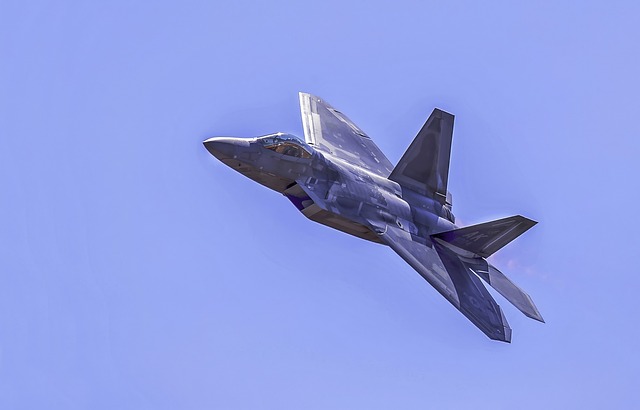F22 Top Speed with Afterburner
The F22 Top Speed is a marvel of modern aviation, capable of reaching incredible speeds with the help of its afterburner. In this article, we’ll dive into the details of the F22 Top Speed With Afterburner and what makes this aircraft such a technological marvel.
Introduction
There are few things as thrilling as the roar of a fighter jet streaking across the sky at supersonic speeds. For decades, aircraft designers and engineers have been pushing the boundaries of what’s possible, constantly striving to create faster, more advanced aircraft that can outmaneuver and outpace anything that comes their way. The F22 Top Speed is one such aircraft, capable of reaching blistering speeds with the help of its afterburner.
In this article, we’ll take a closer look at the F22 top speed with an afterburner, exploring the technology that makes it possible and the incredible performance of this iconic fighter jet.
What is the F22 Top Speed?
Before we dive into the specifics of the F22 top speed with an afterburner, let’s take a moment to introduce the aircraft itself. The F22 Top Speed is a fifth-generation fighter jet that was first introduced in the United States Air Force in 2005. Designed to replace the aging F15 Eagle, the F22 Top Speed is a stealthy, highly advanced aircraft that is capable of outmaneuvering and outpacing any other fighter jet in the world.
With a top speed of over Mach 2, the F22 is one of the fastest fighter jets in the world, capable of reaching speeds of up to 1,500 miles per hour. The aircraft is powered by two Pratt & Whitney F119-PW-100 turbofan engines, each capable of producing over 35,000 pounds of thrust.
How Does the F22 Afterburner Work?
So, what exactly is the afterburner, and how does it help the F22 reach such incredible speeds? Essentially, the afterburner is a device that injects fuel into the exhaust stream of the engine, creating a secondary combustion process that generates additional thrust.
When the afterburner is engaged, the F22’s engines produce a massive flame that extends several feet behind the aircraft. This additional thrust allows the F22 to reach much higher speeds than it could achieve with the engines alone, making it an incredibly versatile and powerful aircraft.
F22 Top Speed with Afterburner
With the afterburner engaged, the F22 is capable of reaching incredible speeds that are unmatched by any other fighter jet in the world. According to official specifications, the F22 has a top speed of Mach 2.25 (1,500 mph) at altitude with an afterburner, making it one of the fastest and most maneuverable aircraft ever built.
To put that in perspective, the F22 can cover a distance of over 28 miles in just one minute when flying at top speed. That’s like traveling the length of a football field in less than a second!
F22 Top Speed Compare to Other Fighter Jets
While the F22 is certainly an impressive aircraft in its own right, it’s important to consider how it stacks up against other fighter jets when it comes to speed and performance.
For example, the F15 Eagle, which the F22 was designed to replace, has a top speed of just over Mach 2.5 (1,875 mph) with an afterburner. The Russian-made Sukhoi Su-57, which is considered one of the F22’s main rivals, has a top speed of Mach 2.1 (1,550 mph) with an afterburner. So, while the F22 may not have the highest top speed of any fighter jet, it’s certainly among the fastest and most maneuverable aircraft in the world, thanks in large part to its advanced avionics, stealth technology, and powerful engines.
Advantages of the F22 Top Speed
The F22’s incredible speed gives it a number of advantages over other fighter jets. For example, the F22 can quickly intercept and engage enemy aircraft at high altitudes and long distances, making it an ideal aircraft for air superiority missions.
The F22’s high speed also allows it to rapidly respond to changing battlefield conditions, quickly repositioning itself to take advantage of opportunities and avoid threats. This makes the F22 an incredibly versatile aircraft that can be used in a variety of different roles, from air-to-air combat to ground attack and reconnaissance.
What are the Challenges of Flying at High Speeds?
While the F22’s high speed is certainly an advantage in many situations, flying at supersonic speeds also presents a number of challenges for pilots and aircraft designers. For example, at high speeds, the forces of air resistance and drag become much more pronounced, requiring aircraft to be carefully designed and aerodynamically optimized to minimize these effects.
In addition, flying at supersonic speeds can generate intense heat, both from friction with the air and from the heat generated by the engines themselves. This can place a significant strain on the aircraft’s engines and other systems, requiring advanced cooling and heat management technologies to prevent damage and ensure safe operation.
FAQs: F22 Top Speed
Q: What is the F22 Top Speed with an afterburner?
A: According to official specifications, the F22 has a top speed of Mach 2.25 (1,500 mph) at altitude with an afterburner.
Q: What is the afterburner, and how does it work?
A: The afterburner is a device that injects fuel into the exhaust stream of the engine, creating a secondary combustion process that generates additional thrust.
Q: How does the F22’s top speed compare to other fighter jets?
A: While the F22 may not have the highest top speed of any fighter jet, it’s certainly among the fastest and most maneuverable aircraft in the world.
See Also:
Conclusion: F22 Top Speed
The F22 Raptor is an incredible aircraft that represents the pinnacle of modern aviation technology. With its advanced avionics, stealth technology, and powerful engines, the F22 is capable of outmaneuvering and outpacing any other fighter jet in the world, making it an indispensable asset for the United States Air Force and a symbol of American technological superiority.
The F22’s top speed with afterburner is an impressive feat of engineering, allowing the aircraft to reach incredible speeds and giving it a number of important advantages over other fighter jets. While flying at supersonic speeds presents a number of challenges, the F22’s advanced design and technology make it one of the safest and most versatile fighter jets in the world.




